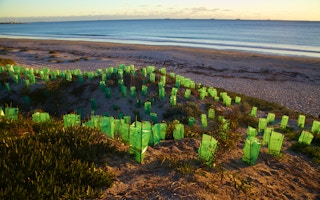A shift in policy is needed if Australia is to grow its economy without damaging the environment, a new modelling study from Nature suggests.
Australia is ‘free to choose’ economic growth and falling environmental pressures highlights that as economic growth continues to rise, so too does its toll on the environment.
However, author Dr Steve Hatfield-Dodds from the CSIRO and colleagues state that Australia can continue to grow its materials-intensive industries and enjoy continued high economic growth while reducing its impacts on climate, water and biodiversity.
The article estimates the performance of Australia’s economy in a global market, with a particular focus on the agriculture, energy and transport sectors, which are said to exert the largest environmental pressures on land, water and climate.
Using a multi-model framework to examine the outcomes of more than 20 different scenarios involving economic growth and environmental change in Australia, the findings indicate that Australia’s gross domestic product will more than double by 2050 in all scenarios.
However, without carbon pricing, greenhouse gas emissions would increase by up to 90 per cent in the same period. Even with a carbon tax at a similar level to that in force in 2012-14, Australia’s emissions were projected to rise by about 25 per cent by 2050.
Complying with a two-degree (Celsius) global warming target will require higher taxes, which the authors say can be reached most cost-effectively through large-scale replanting of native flora and fauna (afforestation) and renaturation programs – which would reduce between one-third and half of all emissions – and become a profitable export industry through the sale of carbon credits.
The rest could be achieved by reducing the emissions- and resource-intensity of the economy. For example, although water demand will increase (by up to 101 per cent by 2050), up to 56 per cent of this could be met by desalinisation programs in coastal cities and water recycling for industrial use.
However, to get business on board, the study states that a shift in policy is needed to encourage businesses to reduce their environmental impacts.
Dr Hatfield-Dodds, who is project director for Australian National Outlook and CSIRO Integration Science and Modelling, said: “Our key finding is that Australia can break the links between economic growth and environmental pressure, with key pressures falling or stable while the economy more than doubles in size out to 2050…
“We do not find, however, that environmental pressures can be reduced for free. In most cases, reducing environmental pressure results in economic growth being a little slower than it would be in the short term, but then stronger in the long term. In some cases – like energy efficiency – reducing environmental pressure results in stronger economic growth almost immediately.”
He added that the most striking aspect of the work was that very large reductions in environmental pressures – such as reversing the loss of native habitat in agricultural landscapes, or achieving zero greenhouse gas emissions – have “relatively modest” impacts on income and living standards, whether the impacts are positive or negative.
Dr Hatfield-Dodds concluded: “We find that while individual choices by businesses and households make an important contribution, policy choices are crucial. We also find that changes in social values are not required to make progress towards sustainability over coming decades.”
The work was welcomed by Professor David Stern, director of international and development economics at the Australian National University’s Crawford School of Public Policy.
“The surprising finding in the paper is that there are scenarios where the economy doesn’t just continue to grow under a strong climate policy, but that income per person is actually higher than under current trends – a ‘win-win,’” he said.
“This seems to be because Australia gains from changes in the global economy under the strong climate policies. For example, other countries pay to plant trees in Australia to capture carbon dioxide.”
This story was published with permission from The Fifth Estate and originally published here.










